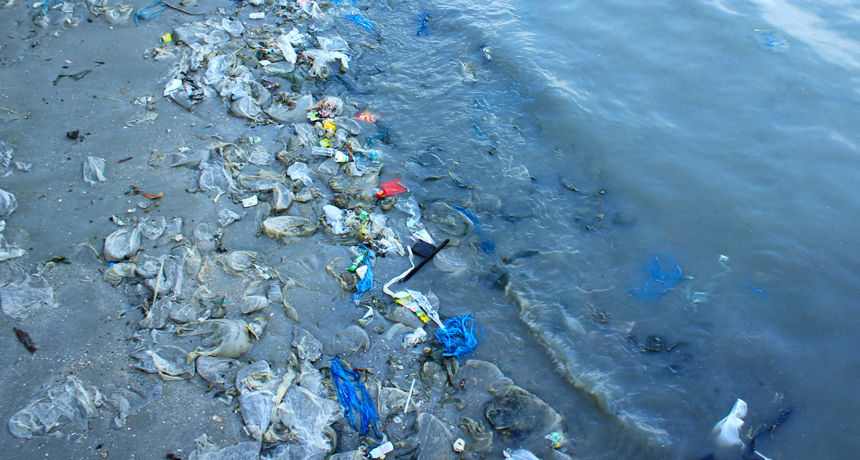Seabirds are more likely to ingest plastic because it emits an odour similar to krill digesting algae.
Everyday 15000 pieces of plastic are dumped in the ocean. That adds up to 6.4 million tonnes of plastic a year and a total of a quarter of a billion metric tonnes of plastic floating in our oceans. More than 200 species of marine fish, mammals, sea turtles and seabirds have been found to eat plastic at sea. Sea birds are most at risk with 99% of species having consumed plastic.
It was assumed that marine animals eat plastic because it looks similar to food. However, seabirds rely on smell rather than vision to find their food so it doesn’t make sense that they’d be tricked into eating plastic based on its appearance. Matthew Savoca and his team decided to test what plastic smells like when its been left in the ocean. They placed bags containing micro plastics off the Californian coast and left them there for a month. When they returned to collect the bags they found that they stank of sulfur.
Although sulfur is incredibly unappetizing to us -it smells like rotten eggs, it is known that seabirds use the smell to find food. Krill feed off algae and when algae cells are broken down they release sulfur, seabirds eat krill so they know that where there’s sulfur there’s food. Plastics hijack this locating system and draw birds into a region that doesn’t have any real food. At this point it is likely that vision does play a part as the birds, having been drawn in by the scent, feed on the plastic which looks like food. After all you’re far more likely to eat something, if it not only looks like food, but smells like it too.
Although sulfur is incredibly unappetizing to us -it smells like rotten eggs, it is known that seabirds use the smell to find food.
To test their theory further the researchers wanted to find out which species of seabird are most affected by the consumption of plastics. They found that albatrosses, petrels, shearwaters, fulmers, prions and petrels – were disproportionately affected by plastic ingestion. This is because these species of seabird rely heavily on sulfur to locate prey.
Having identified this correlation the researchers are now keen for more studies to consider the role smell plays in plastic ingestion in sea turtles, penguins, marine fish and marine mammals. Particularly as sulfur detection has been identified as a food location method in a range of marine animals from krill through to baleen whales. The hope is that this research can then be used to improve initiatives aiming to prevent plastic ingestion in all marine animals.
IMAGE: RELAX_GAP SHUTTERSTOCK

